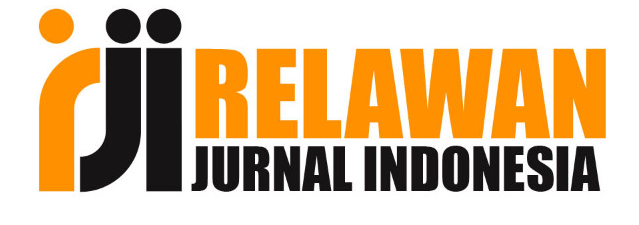The Use of RAP Strategy in Improving Reading Comprehension Of EFL Students
DOI:
https://doi.org/10.36982/jge.v7i1.522Abstract
Abstract
The aim of the study was to find out whether there was a significant improvement of students’ reading comprehension achievement after being taught by using RAP strategy or not. The population was all the students of Information System at Indo Global Mandiri University. The sample consisted forty students which was selected by using Purpossive sampling. In collecting the data, a test was used and there was fifty items of multiple choice questions. The data was analyzed by using t-test (Paired Samples t-test). The findings showed that RAP strategy was significant in improving the EFL students’ reading comprehension achievement. It can be seen from the mean of the pre-test and post-test which shows that there was significant difference in students’ reading comprehension after being taught reading by using RAP Strategy. The students who were taught reading by using RAP Strategy had better higher achievement in comprehension after having the treatment. In conclusion, the use of reciprocal teaching strategy could improve the students’ reading comprehension.
Keywords : reading comprehension, RAP strategy
Â
Abstrak
Tujuan dari penelitian ini adalah untuk mengetahui apakah ada peningkatan yang signifikan dari pencapaian pemahaman membaca siswa setelah diajarkan dengan menggunakan strategi RAP atau tidak. Populasinya adalah seluruh mahasiswa Sistem Informasi diUniversitas Indo Global Mandiri. Sampel dalam penelitian ini terdiri dari empat puluh siswa yang dipilih dengan menggunakan Purpossive sampling. Tes terdiri dari lima puluh pertanyaan pilihan ganda yang digunakan sebagai teknik untuk mengumpulkan data. Dalam penelitian ini, t-test digunakan sebagai teknik untuk menganalisa data (Paired Samples t-test). Temuan menunjukkan bahwa strategi RAP signifikan dalam meningkatkan pencapaian pemahaman membaca siswa EFL. Hal ini dapat dilihat dari hasil rata-rata pre-test dan post-test yang menunjukkan bahwa ada perbedaan yang signifikan dalam pemahaman membaca siswa setelah diajarkan membaca dengan menggunakan Strategi RAP. Siswa yang diajar membaca dengan menggunakan Strategi RAP memiliki pencapaian pemahaman yang lebih baik. Dapat disimpulkan bahwa penggunaan strategi pengajaran RAP dapat meningkatkan pemahaman membaca siswa.
Kata kunci: pemahaman bacaan, strategi RAPReferences
Aliponga, J. 2013. Reading journal: Its benefits for extensive reading. International Journal of Humanities and Social Science, 3(12), 73-80.
Alyousef, H. S. 2006. Teaching reading comprehension to ESL/EFL learners. Journal of Language and Learning, 5(1), 63-73.
Davey, B., & Macready, G. 1990. Applications of latent class modeling to investigate the structure underlying reading comprehension items. Applied Measurement in Education, 3(3), 209
Ellis, E.S., & Graves, A.W. 1990. Teaching rural students with learning disabilities: A paraphrasing strategy to increase comprehension of main ideas. Rural Special Education Quarterly, 10, 2-10.
OECD. 2016. PISA 2015 result in focus: What 15-year-olds know and what they can do with what they know. Retrieved from https://www.oecd.org/pisa/keyfindings/pisa-2015-results-overview.pdf
Pilten, G. 2016. The evaluation of effectiveness of reciprocal teaching strategies on comprehension of expository texts. Journal of Education and Training Studies, 4(10), 232-247.
Sagirli, M. 2016. Analysis of reading comprehension levels of fifth grade students who learned to read and write with the sentence method. Journal of Education and Training Studies, 4(2), 105-112.
Smith, R. 2007. Learning how to learn. Milton Keyner: Open University Press.
Wallen, Norman E & Jack R. Fraenkle. (1991). Educational Research: A Guide to the Process. New York, NY: McGraw-Hill Book Company.
Atkinson. 2002. PQRST Method of reading.Retrieved from http://www.msturchin.com/The%20PQRST%20Method. Pdf.
Depdiknas. 2006. Model penilaian kelas. Jakarta : Dirjen kemendiknas.
Hamra, A., &Syatriana, E. 2012. Amodel of readingteaching for universityEFLstudents: Need analysis and modeldesign.English Language Teaching. 5(10), 1-11, Retrieved from http://dx.doi:10.5539/elt.v5n10p1.
Kagan, S. 1994. Cooperative learning. San Clemente, CA: Kagan Publications.
Killen, R. 1996. Effective teaching strategies. Wentworth: Australia Print Group.
Komang, Dedy SandiarsaSari, Tantra, Dewa Komang, Ratminingsih, Ni Made. 2013. A comparative study of PQRST and SQ3R strategies based on te text types upon the eight grade students’ reading competency at SMPN 4 Singaraja. Journal Program Pascasarjana Pendidikan Ganesha, 1(1), 1-11
Lyman, F. 2005. Description of Exemplary Techniques and Methods. Think/Pair/Share. Retrieved from http://www.users.muohio.edu/shermalu/aera91AA.html.
Mikulecky, B. S., & Jeffries, L. 2008. Reading power. New York, NY: Addison Wesley Longman, Inc.
Thomas, E. L., & Robinson, H. A. 1995. Improving reading in every class. Boston: Allyn and Bacon.
Downloads
Published
How to Cite
Issue
Section
License
Global Expert: Jurnal Bahasa dan Sastra is published by Universitas Indo Global Mandiri and licensed under a Creative Commons Attribution-ShareAlike 4.0 International License.










